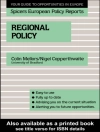This book contains a series of interpretive essays on the most dramatic aspects of American economic growth during the last century-the sweeping technological and organizational changes in manufacturing and agriculture and their profound economic and social consequences. The overall focus is the maturing of the American economy from a classic market economy, based primarily on small units of production and private enterprise, through the growth of industrialism and the structural transformation of the economy, to the modern mixed economy with its complex array of giant corporations and labor unions and greatly expanded government sector. The chapters are organized thematically. A distinctive feature of the book is the use of illustrative case studies in each chapter.
Table des matières
Preface
1. An Overview of American Growth, 1840
Introduction
The Dimensions of Growth: Some Economic Aggregates
A Preview
2. The Sources of Growth
Introduction
Factors on the Supply Side
Factors on the Demand Side
Measuring the Relative Importance of Demand and Supply Factors: Case Studies
The growth of the petroleum industry, 1860-1914
The growth of iron and steel output, 1842-1858
Conclusion
3. Technological Change in Manufacturing
Introduction
Components of Technological Change
Invention
Innovation
Diffusion
Factors Influencing Technological Change
Economic factors
Factor endowment
Changing profit expectations
Population size and distribution
Noneconomic factors
Diffusion of Technological Change
Factors influencing diffusion
Case studies in diffusion
Machine tools industries
Draper loom in cotton textiles
Conclusion
4. The American Industrial Entrepreneur
Introduction
The Entrepreneurial Function and Its Determinants
The Industrial Entrepreneur: A Closer Look
Characteristics of the business elite
Four case studies
Edison
Carnegie
Ford
Morgan
The four: a summing up
Conclusion
5. Organizational Change in Manufacturing
Introduction
Changes in the Concept of the Firm
The corporation and its growth
The emergence of noncompetitive elements
Mergers and consolidations
Changes in the Administration of the Firm
A Case Study: Du Pont
An Aside: The ‘New Imperialism’ of the Multinational Corporation
Conclusion
6. Technological and Organizational Change in Agriculture
Introduction
Sources of Output Growth
Westward expansion and regional specialization
Mechanization
Agricultural organization and practices
Agricultural research
Case Studies of Productivity Growth and Diffusion
Grain farming, 1840-1910
Dairy farming, 1850-1910
Hybrid corn, 1930s and 1940s
An Aside: Agriculture in the Postbellum South
Conclusion
7. Industrialism, Unrest, and Reform: The Coming of Government Regulation
Introduction
Reactions to Industrialism
Agrarian unrest
Industrial unrest
Government Intervention and Legislative Remedies: A Case Study of Railroad Regulation
The development of railroad regulation
The demand for railroad regulation: an interpretation
The burden of railroad regulation: an estimate
Conclusion
8. The Market Economy: Prosperity and Prostration
Introduction
A Brief Overview
The 1920s
Portents of doom
Changes in income distribution
Automobiles, housing, and market saturation
The 1930s: The Crash and Its Aftermath
Consumption and the Depression
Government economic policy: effective or inconsequential?
Brown’s appraisal of fiscal policy
Kirkwood’s policy simulations: an appraisal
Conclusion
9. World War Two and Its Aftermath: The Ascendancy of the Mixed Economy
Introduction
The Changing Government Sector
The Private Sector and Government: Uneasy Truce?
Epilogue: Prospect and Retrospect
Bibliographic Note
Notes
Index
A propos de l’auteur
Peter George is Dean of Social Sciences and Professor of Economics at Mc Master University. He is also an associate member of the Department of History.












